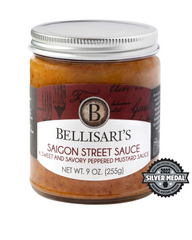
Sous Vide Cooking
Maybe you've heard sous vide mentioned before, in fancy restaurants and on competition cooking shows. But more and more, people are doing it at home. Once limited to the pros, sous vide (pronounced sue-veed) is a cooking technique that utilizes equipment with precise temperature control to deliver consistent, restaurant-quality results. High-end restaurants have been using sous vide cooking for years to cook food to the exact level of doneness desired, every time. The technique recently became popular for home cooks with the availability of affordable and easy-to-use sous vide precision cooking equipment.
At its most fundamental level, sous vide cooking is the process of sealing food in an airtight container—usually a vacuum-sealed bag—and then cooking that food in temperature-controlled water. In French, the term translates to "under vacuum," which makes sense. Chefs vacuum seal a protein with marinade, sauce, herbs, or spices, and drop it in a large pot of water. There’s no contact with a heated metal surface. No contact with flames or steam or smoke. The water never comes to a boil.
It’s very difficult and time-consuming to consistently cook great food. Food ends up overcooked on the outside, with only a small portion in the center that is cooked to the temperature you want. Food loses flavor, overcooks easily, and ends up with a dry, chewy texture. With precise temperature control in the kitchen, sous vide provides the following benefits:
-
Consistency
Because you cook your food to a precise temperature for a precise amount of time, you can expect very consistent results. -
Taste
Food cooks in its juices. This ensures that the food is moist, juicy, and tender. -
Waste Reduction
Traditionally prepared food dries out and results in waste. For example, on average, traditionally cooked steak loses up to 40% of its volume due to drying out. Steak cooked via precision cooking loses none of its volumes. -
Flexibility
Traditional cooking can require your constant attention. Precision cooking brings food to an exact temperature and holds it. There is no worry about overcooking.
A sous vide machine uses a heated metal coil to warm water to a constant temperature, never fluctuating to high or low extremes. This means that the cooking progress is gradual and controlled. Steak, pork, chicken, and fish cook for long periods of time, slowly heating up until the entire piece of protein reaches the temperature of the water. Since the water never goes past the desired temperature of doneness, the meat takes significantly longer to cook (A 12 oz. NY strip takes a little over two hours), but it also means that you’ll never have an overcooked piece of protein.
When that same steak is cooked on the stove, high, direct heat is applied to the meat to bring the internal temperature up to 135°. While that's happening, you can't see what's actually going on inside, which means you either have to guess, cut it open (which ruins the whole presentation), or poke it anxiously with a meat thermometer. With sous vide, there's no guesswork. If you put a steak in a bath set at 140°, there's no chance that steak will go past that temperature. The steak is cooked to a perfect medium-rare throughout, and that's thanks to the sous vide's secondary function, water circulation. Constantly moving water ensures that there are no hot or cool spots in your pot. It’s an insurance policy, acting like some kind of perfectly-heated, dinner-making hot tub! 😋
The only hands-on part happens after the food is removed from the bag. Since the sous vide process removes actual contact with a surface from the equation, the meat won’t be crispy, caramelized, or charred in any way. When cooking proteins like pork or steak (which will look pretty gray after a sous vide bath), that exterior texture is key. The solution? An extremely quick sear after the meat has been cooked through. Searing steak or pork in a ripping-hot cast iron skillet for about a minute on each side (including the smaller sides) will develop some caramelization without cooking the interior any further.
While a chef would normally spend about an hour cooking a ribeye from start to finish (letting it come to temperature, cooking it in a skillet, letting it rest, slicing it, and plating it), the sous vide method shaves off time by allowing the chef to unwrap the steak and quickly sear, slice, and serve, all while guaranteeing the right interior doneness. We're living in the golden age of at-home sous vide cooking, with small, affordable, powerful sous vide machines warming the waters for home cooks for around $200 dollars.
And while we obviously love a sous vide machine for meats, fish, etc., there's more to explore. Chefs love sous vide eggs, for perfectly-set whites and runny yolks. Potatoes cook especially well, and tender vegetables like asparagus are easily cooked for salads or sides. The sous vide doesn't discriminate.
Trying new stuff is stressful. I get it. If you think that the whole sous vide process still sounds intimidating, I’m suggesting you step outside of your cooking comfort zone, and try sous vide precision cooking. Sous vide cooking is much easier than you might think, and it usually involves three simple steps:
- Attach your precision cooker to a pot of water and set the time and temperature according to your desired level of doneness.
- Put your food in a sealable bag and clip it to the side of the pot.
- Finish by searing, grilling, or broiling the food to add a crispy, golden exterior layer.
And there you have it – easy as 1-2-3. Have fun trying this precision cooking method! Try our sous vide Eggs Benedict. You’ll be pleasantly surprised by how easy it is, and those you’re serving it to will think they’re eating at a high-end, fancy restaurant. Happy experimenting with sous vide from all of us at Bellisari’s!






